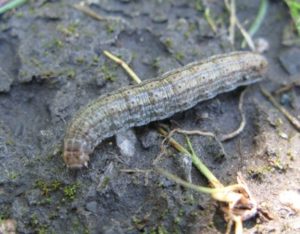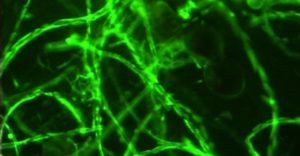CATTLE AND SOIL WORKING TOGETHER
Jocelyn Velestuk, MSc, PAg
Good soil management is vital to the long-term profitability of any farm operation, including those involving cattle. Farms that raise cattle can manage to improve rather than degrade the land. Balancing the removal of nutrients with the addition of manure and other fertilizers as well as using practices to encourage good microbial activity/diversity and improve soil tilth and water infiltration can have long-term benefits. Minimizing erosion and compaction from cattle traffic is also important to maintaining the soil structure and proper functioning of the soil. Let’s take a look at some of the different practices that farmers can adapt to improve their soil health and make their cows and soil work together.
Manure Management
Manure is a valuable organic form of fertilizer and can be an asset to soil management. Areas with low organic matter or shallow topsoil can benefit greatly from manure addition. Soil quality is improved with the addition of manure, which supplies, in a sense, a slow release form of nitrogen (N) as well as organic carbon (C), phosphorous (PO4^2-), potassium (K), and micronutrients such as zinc and copper. Nitrogen in manure is in both plant available and organic forms. The organic N is transformed over time to plant available forms of N through microbial activity through a process called mineralization.
The highly variable composition and nutrient content of manure depends on feed composition, bedding, and storage. Manure that is composted will often have increased levels of plant available forms of N, such as ammonium and nitrate, compared to fresh manure. So how much do you apply to meet your crop nutrient demands? The amount of manure to apply is often based on the available P in the manure because the N to P ratio (N:P) is often different in manure compared to what plants require. Fields that have had manure in the past will often show consistently higher soil P and additional fertilizer N might be required to create balanced fertility for crop growth. The sampling of manure and soil by a qualified agronomist can aid in creating a balanced fertility plan.
Cattle manure and urine deposited directly on the land from in-field winter feeding systems such as bale grazing, chaff grazing, cover crop grazing, or bale processing/rolling on pasture or cropland can also return some nutrients to the land. Nitrogen in a winter feeding system may have increased levels of plant available N in the spring because of the decreased loss of ammonia from the decomposition of urea in urine directly deposited on soil versus a system where the manure is spread. Another efficiency of in-field feeding is that cattle do the nutrient spreading themselves, saving the producer time, labor, and equipment costs. Feeding can also be done in areas such as hilltops that can benefit from the organic matter addition of manure and leftover feed.
Considerations when animals are on the land including minimizing manure in low areas and around wetlands as much as possible to prevent manure from directly entering the water. High cattle traffic on moist soil in the springtime is also a concern if the cattle are not pulled off the land before the frost melts. Cattle hooves can cause compaction which can result in decreased crop yields. Limiting cattle traffic on cropland to when there are frozen or dry soil conditions can alleviate some of the compaction risks.
Straw and Forage
Baling and removal of cereal straw for cattle bedding following crop harvest exports nutrients from the land such as N, P, K and organic C. Rainfall on straw swaths prior to baling may leach some of the nutrients in the residue back into the soil, although some biomass losses can occur. Potassium is a nutrient that relies on leaching from crop residue to return plant available K+ ions to the soil. Continuous removal of straw from cropping systems might result in a decrease in available K. Organic matter losses from straw removal over time can also decrease soil quality and the soil’s ability to retain nutrients. Methods to reduce the effects of straw removal can include rotating straw removal between fields (i.e. every four years) and lengthening the period of time between removals to build a protective surface mulch. One other consideration is importing straw to bring nutrients in to rather than out of the farm. A management plan for straw removal is important to maintain the long-term productivity of the land.
Annual forage crops used for silage or greenfeed such as barley, oats, and corn are removed at an earlier stage than crops for grain harvest. The desire for high nutrients in the feed results in the removal of the above ground plant material at a stage when the plant is actively taking up nutrients which means a high level of nutrients is removed from the soil. This loss of nutrients should be accounted for in the soil fertility plan in order to maintain the soil nutrient status for the upcoming and subsequent growing seasons.
Perennial Forage Stands
Perennial forages with their extensive root systems are beneficial to soil health as they increase soil organic carbon, enhance soil microbiological diversity and activity, and maintain soil cover to prevent erosion. Including forage legume species, such as alfalfa, will allow for nitrogen fixation and increase the soil N as well as access nutrients and water lower in the soil profile. Declining productivity in hay stands can be due to decreasing levels of available nutrients in the soil from the continuous removal of above ground stands. Plant species like alfalfa use high levels of K and P, although fixing high amounts of N. Providing balanced fertility for the duration of the stand is, therefore, important when seeding and maintaining hay crops.
Grazing management is also integral to the long-term health of forage stands. Allowing grasslands enough rest period and implementing practices such as rotational grazing are essential to maintaining healthier plant stands for long-term production. As previously mentioned, cattle distribute nutrients in manure as they graze and maintaining plant cover decreases erosion potential and retains more nutrients.
Minimizing erosion is integral when managing soil and can be done through minimizing tillage and maintaining plant cover. Feeding cattle on grassed areas can eliminate the need to till manure into the soil. When seeding annual crops into terminated forage stands, using a low-disturbance seeder with a disc or knife opener can result in comparable crop yields to terminating via tillage. When the soil is kept in place, the arbuscular mycorrhizal fungi can create a network in the soil to increase the nutrient and water uptake of plants. A healthy, functioning soil has good microbial diversity including beneficial bacteria and fungi species. Soil that is left in place can also develop better soil tilth and structure over time, creating a better functioning soil.
A productive mixed farm operation is one that focuses on both the nutrition of animals and health of the soil. It all starts with balanced nutrition and adopting good management practices to make the soil and cattle work together. Tweaking the management of your farm can be as simple as making one change at a time with soil health in mind to suit what works for you and your farm. When farm management prioritizes maintaining soil fertility and long-term soil health alongside healthy cattle everyone wins!
This article was courtesy of the Saskatchewan Soil Conservation Association (www.ssca.ca) Spring 2017 Newsletter
Article PDF available here



